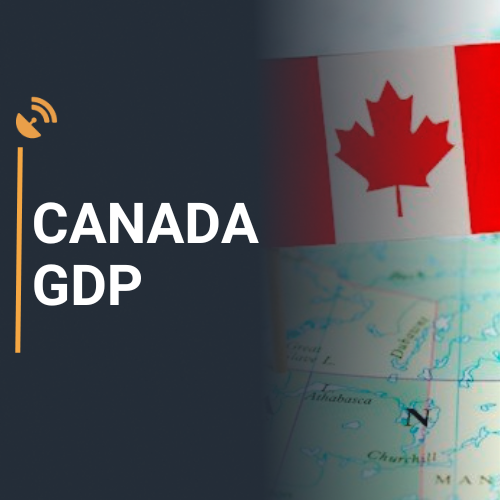Canada GDP Preview: Economy set to dodge recession as economists predict growth returned in Q4
- Canadian GDP is expected to have expanded by 0.8% YoY in Q4.
- Bank of Canada sees GDP coming in flat on an annualized basis.
- The Canadian Dollar seems to have embarked on a range-bound theme.

The release of the Canadian GDP Growth Rate will be the salient event on the domestic calendar later in the week. According to Statistics Canada, the economy is expected to have expanded 0.8% during the October-December period compared with the same period a year earlier.
Canadian GDP could bolster the cautious stance from the BoC
Following the annualized 1.1% contraction recorded in Q3 2023, the Canadian economy is predicted to have performed very well in the latter part of last year, growing by 0.8% and prompting the BoC to maintain its prudent monetary policy stance.
On the latter, it is worth mentioning that the central bank left its policy rate unchanged at 5.00% at its January 24 event. At that meeting, the BoC suggested that the GDP Growth Rate is now estimated at 0.0%. In case the GDP readings match markets’ consensus, the central bank could maintain intact rates for its fifth consecutive time at its March 6 gathering.
Following its latest monetary policy meeting, the Bank predicts gradual economic growth in mid-2024, with household spending likely to increase in the latter half of the year. Exports and business investment are expected to be boosted by recovering foreign demand, while government spending is expected to contribute significantly to growth throughout the year. That said, the bank predicts GDP growth of 0.8% in 2024 and 2.4% in 2025, which is consistent with its October forecast.
According to analysts at the National Bank of Canada (NBC), “Monthly reports published to date suggest a healthy increase in household consumption in the quarter was only partially offset by a contraction in business investment in both the machinery/equipment and structures segments.”
When will the GDP Growth Rate be released, and how could it affect USD/CAD?
Statistics Canada is set to disclose the GDP figures at 13:30 GMT on Thursday.
Regarding USD/CAD, a positive surprise might lend legs to the Canadian Dollar, leaving the door open to a potential knee-jerk reaction in the short-term horizon. However, such a move should be deemed temporary in the current context where the pair’s price action is almost exclusively driven by USD dynamics. Those dynamics are a consequence of alternating speculation over the potential timing of the Federal Reserve’s (Fed) easing cycle.
FX Street’s Senior Analyst Pablo Piovano notes: “So far, USD/CAD appears side-lined around the critical 200-day SMA near 1.3480. The breakout of this range should expose the so-far 2024 peak at 1.3586 recorded on February 13.”
Piovano adds: “In case of bearish attempts, the 55-day SMA around 1.3430 should offer provisional contention prior to the late January low of 1.3358 (January 31). Once this region is cleared, there are no support levels of note until the December 2023 low of 1.3177, seen on December 27.”
Economic Indicator
Canada Gross Domestic Product Annualized
The Gross Domestic Product (GDP), released by Statistics Canada on a monthly and quarterly basis, is a measure of the total value of all goods and services produced in Canada during a given period. The GDP is considered as the main measure of Canada’s economic activity. The data is expressed at an annualized rate, which means that the rate has been adjusted to reflect the amount GDP would have changed over a year’s time, had it continued to grow at that specific rate. Generally, a high reading is seen as bullish for the Canadian Dollar (CAD), while a low reading is seen as bearish.
Read more.Bank of Canada FAQs
What is the Bank of Canada and how does it influence the Canadian Dollar?
The Bank of Canada (BoC), based in Ottawa, is the institution that sets interest rates and manages monetary policy for Canada. It does so at eight scheduled meetings a year and ad hoc emergency meetings that are held as required. The BoC primary mandate is to maintain price stability, which means keeping inflation at between 1-3%. Its main tool for achieving this is by raising or lowering interest rates. Relatively high interest rates will usually result in a stronger Canadian Dollar (CAD) and vice versa. Other tools used include quantitative easing and tightening.
What is Quantitative Easing (QE) and how does it affect the Canadian Dollar?
In extreme situations, the Bank of Canada can enact a policy tool called Quantitative Easing. QE is the process by which the BoC prints Canadian Dollars for the purpose of buying assets – usually government or corporate bonds – from financial institutions. QE usually results in a weaker CAD. QE is a last resort when simply lowering interest rates is unlikely to achieve the objective of price stability. The Bank of Canada used the measure during the Great Financial Crisis of 2009-11 when credit froze after banks lost faith in each other’s ability to repay debts.
What is Quantitative tightening (QT) and how does it affect the Canadian Dollar?
Quantitative tightening (QT) is the reverse of QE. It is undertaken after QE when an economic recovery is underway and inflation starts rising. Whilst in QE the Bank of Canada purchases government and corporate bonds from financial institutions to provide them with liquidity, in QT the BoC stops buying more assets, and stops reinvesting the principal maturing on the bonds it already holds. It is usually positive (or bullish) for the Canadian Dollar.
Author

FXStreet Team
FXStreet

















